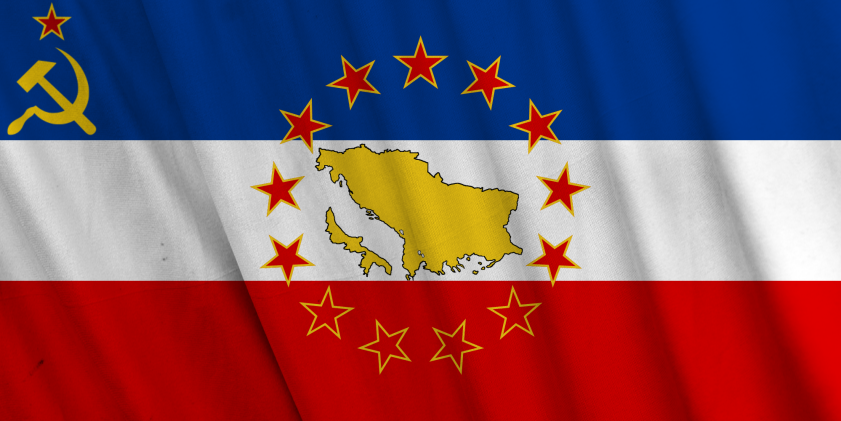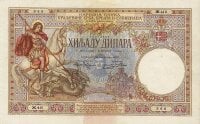This nation is in Vacation Mode for the next 932 turns. This nation cannot be attacked or traded with during that time.
We are uniting all Slavic people under one command. One for all, all for one!
If anyone is wondering, this is the meaning of our glorious flag:
Blue-White-Red are the Pan-Slavic colours, or should we say our colours?
The thirteen red stars represent our states: Slovenia, Croatia, Bosnia & Herzegovina, Serbia, Montenegro, Kosovo, North Macedonia, South Macedonia, Albania, Bulgaria, Italy, South Romania, and Eastern Trace.
The Hammer & Sickle denotes our socialist republic.
(I'm actually Canadian dw I'm not that patriotic)
Alliance History:
2/23/2024 - 5/12/2024: Mayhem, Member
5/12/2024 - Present: Singularity, Community IA
Won 100.173 million dollars by gambling against https://politicsandwar.com/nation/id=612092
2 mil from https://politicsandwar.com/nation/id=618840
26.2mil from https://politicsandwar.com/nation/id=460069 <---- He is irresponsible
And won 128.373 million in total.
9 tails in a row and counting. Tails NEVER fails!
| National Factbook |
| Flag: |

|
| Nation Name: |
Yugoslavija |
| Leader Name: |
Joseph Broz Tito |
| Currency: |

Dinar |
| National Animal: |

Cat |
| History: |
The Struggle for Unity
The interwar years were a tumultuous time for the young Kingdom of Yugoslavija. Ethnic tensions simmered beneath the surface, as the various peoples sought to assert their autonomy and interests within the centralized state. Assassinations, riots and political instability threatened to tear the country apart.
Yet the Yugoslavist ideal persisted, championed by those who saw the country's diversity as a strength to be celebrated, not a weakness to be feared. Poets, artists and intellectuals created a vibrant cultural renaissance, fusing together the folk traditions of the different regions into a new Yugoslavijan identity.
The Crucible of War
When World War II engulfed Europe, the people of Yugoslavija rose up to defend their homeland. Serbs, Croats, Slovenes and others joined the partisan resistance, fighting side-by-side against the Axis invaders. Their bravery and sacrifice became the stuff of legend, as Yugoslavija's sons and daughters proved their commitment to the country's ideals.
The war also exposed the deep fissures within Yugoslavija, as ethnic rivalries and nationalist movements threatened to tear the country apart. But the partisan fighters, led by the charismatic Josip Broz Tito, refused to let their dream die. They forged a new socialist Yugoslavjia from the ashes of war, dedicated to the principles of "brotherhood and unity."
The Golden Age of Yugoslavija
Under Tito's leadership, Yugoslavija entered a period of relative stability and prosperity. The economy boomed, living standards rose, and the country became a respected voice on the global stage. Yugoslavija's unique brand of "self-managing socialism" and non-aligned foreign policy won it admirers around the world.
The arts and culture also flourished, as Yugoslavija's diverse peoples came together to create a vibrant, syncretic culture. From the Adriatic coast to the Pannonian plains, a distinctly Yugoslavijan way of life emerged, blending the best of East and West. The country's cities became cosmopolitan hubs, while its natural beauty drew tourists from far and wide. |
| Geography |
| Continent: |
Europe |
| Land Area: |
136,793.90 sq. km |
| Terrain: |
The terrain of Yugoslavija is diverse and varied. The northern regions feature fertile plains, while the eastern parts are dominated by limestone ranges. The southeastern areas are predominantly mountainous and hilly. Along the Adriatic coast, there is a seaside region with a Mediterranean-Venetian flair.
The interior of the country is characterized by rugged, jagged mountains. Deep in the mountainous regions of Montenegro, the terrain is described as "extremely barren and crippling quiet," with "no oak, no white or copper beach, just dry, brittle, barely green grass... Everything is stone." Crossing these treacherous mountains on narrow, winding roads is a grueling and hazardous endeavor for travelers.
The varied terrain poses significant challenges for military operations in Yugoslavija. The mountainous regions, with their limited road networks, would constrain the mobility of heavy ground forces and make them vulnerable to guerrilla attacks. The fertile northern plains, on the other hand, would be more favorable for large-scale maneuvers. Overall, the diverse and often inhospitable terrain of Yugoslavija is a key factor in shaping the country's history and military campaigns. |
| Highest Peak: |
Triglav, 2,863 meters |
| Lowest Valley: |
Timok River, 28 meters |
| Climate: |
Yugoslavjia has a diverse climate due to its varied geography. Most of the country has a moderately warm and rainy continental climate, with mean monthly temperatures ranging from -3°C in January to 18°C in July. The coldest regions are the mountainous areas of Lika and Gorski Kotar, which experience snowy, forested climates above 1,200 meters. The warmest areas are along the Adriatic coast, which has a Mediterranean climate moderated by the sea.
Precipitation levels vary greatly, from as little as 600 mm per year in the outer Adriatic islands and eastern Slavonia, to over 3,500 mm in the Dinaric Alps. The maximum precipitation is observed in the Gorski Kotar mountains. Prevailing winds are light to moderate, with higher velocities recorded along the coast, especially the cool northeasterly bura and warm southerly jugo winds.
Yugoslavija experiences variable weather conditions depending on the distribution of pressure systems. Winters are generally cold, with frequent snow, while summers can be hot, especially in continental areas. Thunderstorms are most common during the warmer months. Overall, Yugoslavija has a diverse climate that varies significantly by region due to its complex geography. |
| People & Society |
| Population: |
2,302,653 people |
| Demonym: |
Slavic, Yugoslav |
| Demonym Plural: |
Slavics, Yugoslavics |
| Ethnic Groups: |
Serbian - 36.3%
Croatian - 19.7%
Muslims - 8.9% |
| Languages: |
Serbo-Croatian - 39.2%
Slovenian - 18.9%
Macedonian - 9.8% |
| Religions: |
Serbian Orthodoxy - 65.1%
Muslim - 18.9%
Catholic - 4.4% |
| Health |
| Life Expectancy: |
80 years |
| Obesity: |
15.4% |
| Alcohol Users: |
1.4% |
| Tobacco Users: |
1% |
| Cannabis Users: |
1.2% |
| Hard Drug Users: |
0.1% |
| Economy |
| Description: |
Yugoslavija has a unique economic system that combines elements of central planning and market mechanisms. Enterprises are legally independent organizations with the right of self-management by workers, while central authorities influence overall economic growth, production composition, and expenditure through fiscal, investment, and trade policies.
From 1952 to 1965, Yugoslavija experiences a "golden age" of rapid economic growth, rivaling Japan as the fastest growing economy worldwide. This is driven by productivity gains rather than employment growth, as investments are directed towards the most productive technologies. The dinar is strong, imported goods are accessible, investments raise the economy's capacities, and infrastructure is partially renewed or enlarged.
However, the economy faces challenges. Investments are often inefficient, with foreign debt financing consumption rather than exports. By the late 1970s, exports cover only about 50% of imports and the current account shows significant deficits. In the 1980s, Yugoslavija undergoes economic stagnation and decelerated growth, similar to other socialist countries.
The disintegration of Yugoslavija in the early 1990s is partly due to the different approaches taken by the republics in transitioning to a market economy. Economic reforms in the late 1980s under Prime Minister Ante Marković show promise, with the inflation rate dropping from 2,500% in 1989 to 8.4% in February 1990, reviving the economy. |
| Average Yearly Income: |
$52.03 |
| Gross Domestic Product (GDP): |
$2,423,975,823.00 |
| GDP per Capita: |
$1,052.69 |
| Gross National Income (GNI): |
$1,207,363,790.00 |
| Industries: |
Yugoslavija has a diverse industrial sector that plays a significant role in its economy. Heavy industries like steel, machinery, and chemicals are major contributors, with factories like the Rade Koncar enterprise employing over 3,000 workers. The country also has a thriving manufacturing industry, producing goods such as steel castings, cast iron, and other metal products.
The transportation sector is crucial, with railways, ports, and roads transporting a large volume of freight traffic, accounting for around 40% of Yugoslavija's total in 1975. Key industries like mining and agriculture rely heavily on this transportation network.
Yugoslavjia's economic system combines elements of central planning and market mechanisms. Enterprises are largely self-managed by workers, while the government influences overall economic direction through policies. This system has allowed for rapid industrial growth, with Yugoslavija rivaling Japan as the world's fastest growing economy from 1952 to 1965.
Overall, Yugoslavija's industrial sector is diverse, with heavy industries, manufacturing, and transportation playing crucial roles, though the economy has grappled with structural issues over time. |
| Military |
| History: |
Yugoslavija has a well-equipped and trained military force, known as the Yugoslav People's Army (Jugoslovenska Narodna Armija or JNA). The JNA is one of the largest standing armies in Europe, with over 180,000 active personnel and significant reserves.
The military is organized into ground forces, air force, and navy components. The ground forces are the largest branch, with over 100,000 troops equipped with modern tanks, armored personnel carriers, and artillery. The air force operates a fleet of fighter jets, bombers, and transport aircraft, while the navy controls a sizable fleet of surface ships and submarines.
Yugoslavija places a strong emphasis on national defense, with conscription requiring all able-bodied men to serve 12-18 months in the military. The country also maintains a territorial defense force of over 500,000 reservists that can be rapidly mobilized in the event of a conflict. |
| Soldiers: |
0 |
| Tanks: |
0 |
| Aircraft: |
0 |
| Ships: |
0 |
| Missiles: |
0 |
| Nuclear Weapons: |
0 |
| Last Updated: 05/08/2024 01:18 am |



















